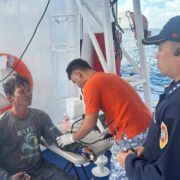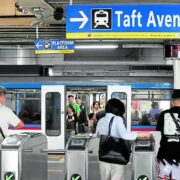Fixing the gaps in inclusive education

The Inclusive Education Act of 2022 was a landmark reaffirmation of the country’s commitment to quality education for all, particularly for learners with disabilities. However, millions of children with disabilities (CWD) are still either out of school or lack the support they need once enrolled. Despite positive intentions in recent policies on inclusive education, the education system has not been responding adequately to the needs of CWDs.
One fundamental challenge is that we don’t know exactly how many Filipino children live with disabilities. In 2022, Unicef estimated that while some 325,000 children have persons with disability (PWD) IDs, millions more CWDs are projected to be unaccounted for.
Government data on CWDs are sporadic and inconsistent. Agencies such as the Department of Health (DOH), Department of Social Welfare and Development (DSWD), the Philippine Statistics Authority (PSA), the National Council on Disability Affairs (NCDA), and the Department of Education (DepEd) use different terms, forms, and methods to identify and classify CWDs. DOH, through barangay health workers, collects data on mothers and infants at risk of disability. DSWD has data on young children with possible developmental delays through day care centers.
Census data through PSA includes disability data, but only for children from 15 to 24 years old. Additionally, the NCDA has a register of children with disabilities with PWD ID cards through local disability affairs offices, while DepEd has its own list of learners with disabilities who are currently enrolled. Overall, no centralized database exists that accurately quantifies or aggregates how many children with disabilities there are across the country.
Of all CWDs nationally, only a small portion are enrolled in school. According to DepEd, only 391,089 learners with disabilities (LWDs) are enrolled in public schools for school year 2024-2025. Even by conservative estimates, this means that over a million children are not in the education system. Among those enrolled as LWDs, less than half have a formal medical diagnosis. The rest have only been flagged as presenting symptoms of a disability, often by teachers themselves, through checklists or other less rigorous methods. The quality and comprehensiveness of these teacher assessments are unknown, which likely impacts the kind of support LWDs are given.
Even then, enrolling in school is only the first step. Ensuring the learner has access to special education (SPED) resources is critical to their growth and development. In many public schools, DepEd has rolled out SPED Programs (i.e., classes targeting specific difficulties and learning goals for LWDs) and SPED Centers (i.e., schools dedicated to catering to the needs of LWDs) to help LWDs succeed in the general education system. However, for most LWDs, access to these services is still quite limited. According to DepEd administrative data, roughly 60 percent of enrolled LWDs do not have access to SPED programs, center, or teacher in their school.
Access to these SPED resources also varies significantly by geography. In urban areas, around half of enrolled LWDs have access to SPED resources in their schools, compared to only one-fourth of LWDs in rural areas. Some regions, like the National Capital Region and Calabarzon, do relatively better than others—particularly the Cordillera Administrative Region, Cagayan Valley, and Bicol Region—which lag behind. In these regions, fewer than one in four LWDs attend schools with SPED resources.
The broad lack of SPED resources places significant burdens on receiving teachers (i.e., non-SPED teachers handling LWDs). A general education teacher managing a mixed classroom of 40 students with limited resources, a heavy workload, and no extensive special education training can’t give the necessary attention and care to LWDs in their classroom.
These significant gaps and challenges need to be fixed in the country’s approach to supporting CWDs. First, we need to build a unified, consistent registry of CWDs, based on shared terminologies across agencies. Data sharing among agencies must be streamlined so that programs can be better coordinated and funding can meet actual needs. Second, we need to invest more and allocate SPED resources, especially in rural and underserved regions. This includes classrooms, materials, and teacher training. Finally, we must increase support for general education teachers, many of whom are already handling LWDs without adequate training or tools.
These are not new policy ideas, but what’s missing is effective implementation, sustainable funding, and the commitment to see these changes through. If we are to provide every child access to quality education, we need to build a better foundation for inclusive education—one that proactively accounts for every child and provides more pathways to meet their needs.
——————————–
Jerick Chan is an associate at IDInsight who provides mixed-methods research support to government and development partners. He is also an active participant in the Second Congressional Commission on Education hearings and consultations.

















